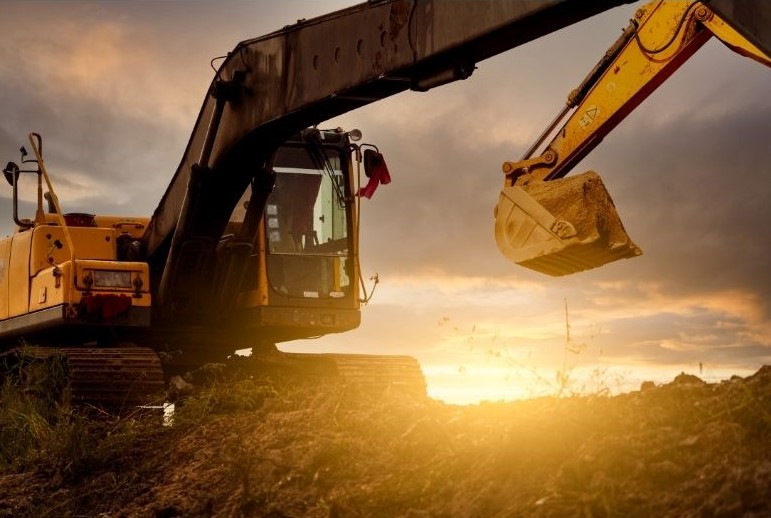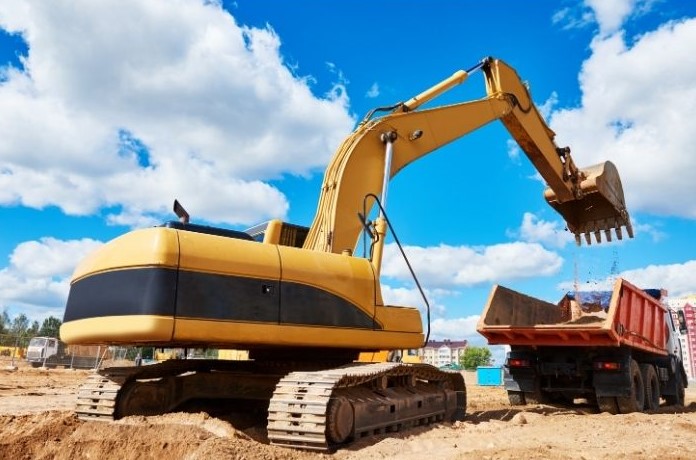Earth moving equipment is essential for construction projects, but it comes with risks. Accidents happen, and damage can be costly. That’s why it’s crucial to have insurance coverage for your earth moving business.
In this guide, we’ll discuss common claims and coverage issues/disputes you may encounter and how to ensure you have the protection you need. Whether you’re a contractor or have your own equipment, understanding these issues can save you time, money, and headaches while claiming insurance.
Accidents and Injuries to Workers and Third Parties
Here are some common disputes that arise in relation to accidents and injuries to workers and third parties involving earth movers:
- Liability Coverage: If a worker or a third party is injured in an accident involving an earth mover, the question of liability arises. Liability coverage is designed to protect the owner or operator of the earth mover in the event of an accident. The dispute may arise over whether the earth mover operator was at fault, or whether the injured party was acting negligently.
- Workers’ Compensation: If a worker is injured while operating an earth mover, the employer is generally responsible for paying workers’ compensation benefits. Disputes may arise over whether the injury was work-related, or whether the worker was acting outside the scope of their employment.
- Third-Party Liability: If a third party, such as a pedestrian or another driver, is injured in an accident involving an earth mover, the owner or operator of the machine may be held liable for damages. Disputes may arise over whether the third party was at fault, or whether the earth mover operator was negligent.
- Negligence: Negligence is a key issue in many claims involving earth movers. Disputes may arise over whether the earth mover operator acted negligently, such as by failing to maintain the equipment, failing to properly supervise workers, or failing to follow safety protocols.
- Insurance Coverage: Finally, disputes may arise over insurance coverage for accidents involving earth movers. For example, the insurance policy may contain exclusions for certain types of accidents or may limit coverage for certain types of damages.
Click this link to learn more about the risks and liabilities involved with earth moving operations

Property Damage to the Site or Surrounding Properties
With any heavy machinery, accidents can happen, which can lead to claims and coverage disputes. One of the most common claims is for property damage to the site or surrounding properties. Here are some common disputes that arise in relation to property damage caused by earth movers:
- Property Damage Coverage: Property damage coverage is designed to protect the owner or operator of the earth mover in the event of an accident that causes damage to the site or surrounding properties. The dispute may arise over whether the damage was caused by the earth mover or by other factors, such as natural disasters or pre-existing damage.
- Negligence: Negligence is a key issue in many claims involving earth movers. Disputes may arise over whether the earth mover operator acted negligently, such as by failing to properly operate the machine or by failing to follow safety protocols.
- Third-Party Liability: If the property damage extends to the neighbouring properties, the owner or operator of the earth mover may be held liable for damages. Disputes may arise over whether the earth mover operator was at fault, or whether the neighbouring property owner was responsible for maintaining their property.
- Insurance Coverage: Insurance coverage disputes may arise over property damage claims involving earth movers. The insurance policy may contain exclusions for certain types of damage or may limit coverage for certain types of property.
- Pre-Existing Damage: Finally, disputes may arise over pre-existing damage to the site or surrounding properties. The dispute may centre on whether the damage was pre-existing or whether it was caused by the earth mover.
Damage to Equipment
One of the most common claims is for damage to equipment. Here are some common disputes that arise in relation to equipment damage involving earth movers:
- Property Damage Coverage: Property damage coverage is designed to protect the owner or operator of the earth mover in the event of an accident that causes damage to the equipment. The dispute may arise over whether the damage was caused by the earth mover or by other factors, such as natural disasters or pre-existing damage.
- Maintenance and Upkeep: Maintenance and upkeep of earth movers are essential to keep them in good working condition. Disputes may arise over whether the owner or operator of the equipment maintained it properly, such as by keeping it clean, checking for wear and tear, and performing regular maintenance tasks.
- Wear and Tear: Earth movers are subject to wear and tear due to their heavy usage. Disputes may arise over whether the damage was caused by normal wear and tear or by negligence or misuse of the equipment.
- Insurance Coverage: Insurance coverage disputes may arise over equipment damage claims involving earth movers. The insurance policy may contain exclusions for certain types of damage or may limit coverage for certain types of equipment.
- Operator Error: Operator error is a common cause of equipment damage in the earth moving industry. Disputes may arise over whether the operator of the earth mover was properly trained or whether they acted negligently.
Working without proper insurance can be highly risky. Learn more about the risks involved without having insurance for your business.
Delay Claims
Here are some common disputes that arise in relation to delay claims involving earth movers:
- Insurance Coverage: Insurance coverage disputes may arise over delay claims involving earth movers. The insurance policy may contain exclusions for certain types of delay claims or may limit coverage for certain types of damages.
- Contractual Agreements: Contracts between the owner or operator of the earth mover and the client may include provisions for delays and disputes that may arise. Disputes may arise over whether the contractual agreement has been breached, or whether the delay was caused by factors beyond the control of the parties involved.
- Force Majeure: Force majeure clauses are included in contracts to cover events beyond the control of the parties involved, such as natural disasters, wars, or government regulations. Disputes may arise over whether the delay was caused by a force majeure event and whether the parties involved are entitled to relief under the contract.
- Inefficiency Claims: Inefficiency claims are made when the delay is caused by the inefficiency of the other party, such as a subcontractor or supplier. Disputes may arise over whether the other party was at fault for the delay or whether the delay was caused by factors beyond their control.
- Liquidated Damages: Liquidated damages are pre-agreed damages that are payable if a project is delayed. Disputes may arise over whether the liquidated damages are reasonable or whether the delay was caused by factors beyond the control of the parties involved.
Environmental Claims
Environmental damage can be caused by a range of factors, including soil erosion, pollution, and destruction of habitats. These types of damage can result in claims for environmental cleanup, restoration, and remediation. Here are some common disputes that arise in relation to environmental insurance claims involving earth movers:
- Coverage Limits: Insurance policies for earth movers may include coverage limits for environmental damage claims. Disputes may arise over whether the coverage limits are adequate to cover the cost of environmental cleanup, restoration, and remediation.
- Reporting Requirements: Insurance policies for earth movers may require the owner or operator to report environmental damage promptly. Disputes may arise over whether the damage was reported in a timely manner, or whether the owner or operator failed to report the damage at all.
- Exclusions: Insurance policies for earth movers may contain exclusions for certain types of environmental damage. Disputes may arise over whether the damage falls within the scope of the exclusions or whether the exclusions are valid.
Contractual Disputes
Contractual agreements are often in place between the owner or operator of the equipment and their clients. These contracts outline the terms and conditions for the use of the earth mover and can include provisions for insurance coverage in case of damage or loss.
Here are some common disputes that arise in relation to contractual disputes for insurance claims involving earth movers:
- Coverage Limits: Insurance policies for earth movers may have limits on the amount of coverage available for certain types of losses or damages. Disputes may arise over whether the limits in the policy are reasonable or whether the damage or loss exceeds the policy limit.
- Policy Exclusions: Insurance policies may exclude certain types of losses or damages from coverage. Disputes may arise over whether the loss or damage falls within the scope of the policy exclusion or whether the exclusion is ambiguous or unclear.
- Timely Notification: Insurance policies typically require that the owner or operator of the earth mover notify the insurance company of any loss or damage in a timely manner. Disputes may arise over whether the notification was timely or whether it was delayed or insufficient.
- Dispute Resolution: Contracts between the owner or operator of the earth mover and the client may include provisions for dispute resolution. Disputes may arise over whether the dispute resolution process was followed or whether the outcome was fair and reasonable.
- Misrepresentation: Misrepresentation occurs when one party makes a false statement or omits material information that is relied upon by the other party. Disputes may arise over whether the insurance policy or the contractual agreement was based on misrepresentation or whether the misrepresentation was intentional or unintentional.

Why These Issues Arise
Insurance claim disputes arise for various reasons. One common reason is the ambiguity or complexity of insurance policies and contractual agreements. The language used in these documents may be difficult to understand or open to interpretation, leading to disagreements over what is covered and what is not.
Additionally, some parties may have different expectations or understandings of what the insurance policy or contractual agreement covers, leading to disputes when losses or damages occur.
Another reason for insurance claim disputes is the nature of the losses or damages themselves. Some types of losses or damages may be difficult to quantify or may involve multiple parties, making it challenging to determine who is responsible for the costs.
Finally, disputes may arise due to miscommunication, negligence, or intentional misconduct by one or more parties involved in the insurance claim.
Common Contractual Disputes
- Breach of Contract: This is one of the most common contractual disputes that arise when one party fails to fulfil their obligations as outlined in the contract. This can include failure to deliver goods or services, failure to pay for goods or services, or failure to meet other agreed-upon terms.
- Scope Creep: Scope creep is a situation where the scope of work agreed upon in the contract expands beyond what was originally agreed upon, which can cause disagreements and conflicts between the parties.
- Payment Disputes: Payment disputes can arise when there is a disagreement over the amount or timing of payment. This can include situations where one party feels they are entitled to more money than they received or where the payment was not made on time.
- Misrepresentation or Fraud: Misrepresentation or fraud can occur when one party provides false or misleading information during contract negotiation. This can cause significant harm to the other party and result in legal action being taken.
Click here to learn more about earthmoving public liability insurance. Tradies 365 also offers free legal advice to mitigate any disputes that may arise during claims.
How to Mitigate Claims and Coverage Issues
Mitigating claims and coverage disputes involves taking proactive measures to prevent disputes from arising in the first place and responding appropriately when they do occur. Here are some strategies for mitigating claims and coverage disputes:
- Clear communication: Clear and open communication between all parties involved in the use of the earth mover can help prevent misunderstandings and disputes. It is important to have a clear understanding of the terms and conditions of the insurance policy and the contractual agreement and to document any changes or updates to these documents.
- Risk assessment: Conducting a thorough risk assessment before using the earth mover can help identify potential risks and hazards and develop appropriate risk management strategies. This can include measures such as implementing safety protocols, using appropriate protective equipment, and training workers on safe operating procedures.
- Proper documentation: Maintaining accurate and detailed documentation can help prevent disputes and provide evidence in the event of a dispute. This can include documentation of any losses or damages, maintenance and repair records for the equipment, and any communication between parties regarding the use of the earth mover.
- Prompt notification: It is important to promptly notify the insurance company of any losses or damages, as delays in notification can lead to disputes over coverage and compensation.
- Legal support: In the event of a dispute, seeking legal support can help ensure that your rights are protected and that the dispute is resolved fairly and in accordance with the terms of the insurance policy and contractual agreement.
Some other methods to avoid such situations include:
Safety Training and Awareness Programs for Workers:
Safety training is crucial for workers in earth moving operations as it helps to prevent accidents and injuries that can result in costly claims and coverage issues. Employers can provide safety training programs that cover topics such as equipment operation, hazard recognition, and proper safety procedures.
Employers can also implement safety awareness programs that promote a culture of safety among workers. These programs can include safety audits, safety committees, and regular safety meetings to discuss potential hazards and how to prevent them.
Regular Equipment Maintenance and Inspection:
Regular maintenance is crucial for preventing equipment breakdowns and ensuring that equipment operates at peak efficiency. This can help to reduce the risk of accidents and injuries that can lead to claims and coverage issues.
Employers can create a schedule for regular maintenance of earth moving equipment that includes tasks such as fluid checks, filter changes, and equipment inspections. In addition to scheduled maintenance, employers can implement a preventive maintenance program that includes regular inspections and maintenance tasks designed to identify and prevent potential problems before they occur.
Adequate Project Planning and Risk Assessment:
Proper project planning involves identifying potential risks and developing strategies for mitigating those risks before work begins. This can include creating detailed project plans that outline timelines, budgets, and potential risks.
Employers can conduct a risk assessment to identify potential hazards and risks associated with earth moving projects. This can help to identify potential claims and coverage disputes that can arise before they occur and allow employers to implement strategies to mitigate those risks.
Implementation of Environmental Protection Measures:
Employers can conduct an environmental impact assessment before beginning earth moving operations. This can help to identify potential environmental risks and develop a plan to mitigate them. Employers can implement erosion and sediment control measures, such as silt fences and sediment ponds, to prevent soil erosion and sedimentation that can contribute to water pollution.
Review and Negotiation of Contracts:
The first step in mitigating claims and coverage issues related to earth moving projects is to carefully review all contracts before signing them. This can help identify potential risks or disputes that could lead to claims down the line.
Employers may want to seek experienced assistance specialised in construction contracts to help them review and negotiate contracts. This can help to ensure that contracts are fair, reasonable, and protective of their interests.
How Tradies365 Can Help
Tradies365 is an Australian insurance brokerage firm that provides insurance and claim services to businesses in various industries, including earthmoving. Our mission is to help businesses protect themselves against risks and liabilities by providing comprehensive insurance coverage and expert support.
Claim Assistance: In addition to insurance coverage, Tradies365 may also offer claim assistance services to help earth movers navigate the claims process. This can include providing guidance on how to file a claim, advocating on behalf of the earth mover during the claims process, and helping to resolve disputes that may arise during the claims process.
Risk Assessment: The Tradies365 platform can also help earthmovers assess their risk exposure and identify areas where they may be particularly vulnerable to claims and coverage issues. This can help earthmovers take proactive steps to mitigate these risks and reduce the likelihood of claims.
Benefits of Working with Tradies365 for Insurance and Claim Services:
There are several benefits to working with Tradies365 for insurance and claim services, including:
- Expertise: Tradies365 specialises in insurance for the earth moving industry, which means that they have a deep understanding of the unique risks and challenges faced by businesses in this field.
- Claims Support: In the event of a claim, Tradies365 may provide expert support to help businesses navigate the claims process. We work closely with our clients to ensure that claims are processed quickly and efficiently, providing guidance and support every step of the way.
- Customised Coverage: Tradies365’s insurance policies are specifically designed to meet the needs of businesses in the earth moving industry. They offer a range of coverage options, including public liability insurance, workers’ compensation insurance, motor vehicle insurance, and equipment insurance, all of which can be customised to meet the specific needs of each business.
If you are an earth moving business looking for comprehensive insurance coverage and expert support, we highly recommend working with Tradies365. Our team of professionals is dedicated to helping businesses in this industry navigate the complex world of insurance and claims with ease, allowing them to focus on what they do best – delivering quality work. Contact us today for more information.
Note: The material offered here is for informational purposes only. It does not constitute legally binding advice and should not be a substitute for a consultation with an insurance expert

